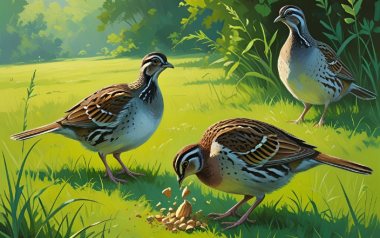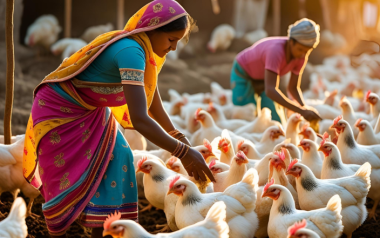Sources: Available upon request.
17 Feb 2024
Poultry meat consumption will increase in the next decade
Poultry meat consumption worldwide will have the highest growth, according to FAO and OECD projections to 2032, and this will be due to many reasons, such as price. It is estimated to grow by 15% in the next decade.
Poultry meat consumption worldwide will have the highest growth, according to FAO and OECD projections to 2032, and this will be due to many reasons, such as price. It is estimated to grow by 15% in the next decade.
Consumers today show greater interest in aspects directly related to the livestock sector, such as animal welfare, environmental care, and health. As the poultry segment has the lowest carbon footprint, these trends could result in more of the global population preferring chicken meat over options such as pork and beef.
FAO and OECD estimate that total poultry meat consumption will reach 91 million tons by 2032, thanks to the social perception of this food, the lower price of poultry meat compared to other types of meat and the fact that it contains a healthy combination of protein and low fat.
Poultry meat production is considered more efficient and requires fewer resources, making it a more sustainable option. In contrast, red meat production requires significant resources and can cause high greenhouse gas emissions.
Production
Poultry meat will increase its dominance within the meat market by accounting for half of all additional meat produced in the next decade.
Poultry production will expand rapidly in countries with feed grain surpluses, such as Brazil and the United States. Expansion is also expected in Asia, as the shift away from pork caused by African Swine Fever outbreaks benefited poultry, especially in China in recent years. In India, Turkey and Indonesia, the poultry industry remains one of the fastest growing segments of the agricultural sector, driven primarily by growing demand for animal protein and the increasing use of eggs for the bakery and confectionery sectors. Poultry meat has advantages over other meats in terms of production duration, costs, feed conversion ratio, and proximity to growing urban markets.
However, large-scale poultry production is more prone to disease. For example, constant outbreaks of highly pathogenic avian influenza (HPAI) affect poultry meat and egg production in many countries. Such outbreaks are easy to detect because of the high mortality rates and clinical signs associated with the disease. This allows for quick implementation of effective control measures and vaccines to prevent its spread. Therefore, HPAI is not expected to affect medium-term projections.
Although many factors have boosted the consumption of poultry meat, its production also faces environmental and sanitary challenges, especially with respect to the use of antibiotics and animal welfare. For this reason, sustainable and responsible poultry production practices must be promoted to ensure the long-term growth of the sector.









































